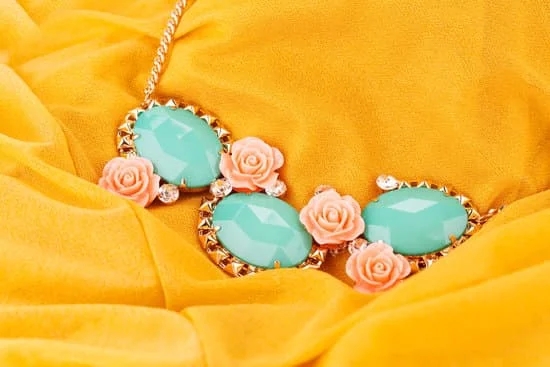History of Dan Simplicio’s jewelry can be traced back to the early 20th century when the renowned Native American jeweler first began his artistic journey. Born into a family with a rich tradition of silversmithing, Dan Simplicio would go on to leave a lasting legacy in the world of jewelry through his unique and innovative designs.
Dan Simplicio was born in the Zuni Pueblo in New Mexico, where he was deeply immersed in his tribe’s cultural heritage and traditional craftsmanship from a young age. Growing up surrounded by skilled artisans and steeped in the traditions of his people, it was only natural that he would eventually carve out a place for himself as one of the most influential figures in Native American jewelry history.
The founding of Dan Simplicio Jewelry marked the beginning of an era that would revolutionize the industry, blending traditional techniques with contemporary styles to create pieces that captivated audiences worldwide. His mastery of silverwork and lapidary skills set him apart, earning him recognition and acclaim that persists to this day.
Early Life and Background of Dan Simplicio
Dan Simplicio was born in 1917 in the Zuni Pueblo, a Native American tribe located in New Mexico. He was born into a family of silversmiths and jewelry makers, and from a young age, he was immersed in the art of creating traditional Native American jewelry. Growing up, Dan Simplicio learned the techniques of silversmithing and stone cutting from his family members, developing a deep appreciation for his cultural heritage and the art of jewelry making.
Traditional Training and Influences
Simplicio’s early years were shaped by the rich artistic tradition of the Zuni people. He honed his skills under the guidance of master craftsmen within his community, learning to work with sterling silver, turquoise, coral, and other precious stones commonly used in Native American jewelry. His designs were heavily influenced by the symbolism and spirituality of Zuni culture, incorporating traditional motifs such as sunfaces, thunderbirds, and corn maidens into his work.
Moving Beyond Tradition
Despite being rooted in tradition, Dan Simplicio also sought to innovate within the realm of Native American jewelry. He drew inspiration from modernist art movements and began to incorporate abstract forms and geometric patterns into his designs, setting him apart from other artists of his time. This fusion of tradition and innovation would become a hallmark of Simplicio’s style and would eventually contribute to his lasting impact on the world of Native American jewelry.
As he matured as an artist, Dan Simplicio would go on to found his own jewelry workshop in Zuni Pueblo, where he would refine his craft and develop a distinctive artistic vision that continues to influence contemporary Native American jewelry makers today.
The Founding of Dan Simplicio Jewelry
Dan Simplicio, a native of Santo Domingo Pueblo, New Mexico, was a highly skilled and influential jewelry maker known for his intricate designs and innovative techniques. The founding of Dan Simplicio Jewelry marked the beginning of a new era in Native American jewelry, as his work truly encapsulated the beauty and tradition of his culture. His unique approach to design and craftsmanship set him apart from other artists of his time, making him a revered figure in the industry.
Simplicio’s interest in jewelry-making dates back to his early years when he would observe and learn from local artisans within his community. His deep connection to the rich heritage and tradition of Santo Domingo Pueblo greatly influenced his decision to pursue a career in jewelry making. With strong roots in indigenous practices, Simplicio sought to preserve and honor the artistry and techniques passed down through generations.
The founding of Dan Simplicio Jewelry allowed him to fully unleash his creative flair while staying true to the cultural foundations that shaped him. His pieces often featured traditional symbols and motifs from Native American culture, showcasing a blend of history and contemporary artistry.
This distinctive style gained popularity among collectors and enthusiasts who recognized the significance of preserving and celebrating indigenous craftsmanship. As a result, Simplicio’s jewelry became highly sought after not only for its aesthetic appeal but also for its cultural value.
| Fact | Data |
|---|---|
| Location | Santo Domingo Pueblo, New Mexico |
| Influence | Native American Culture |
| Recognition | Highly sought after by collectors |
The Influence of Native American Culture on Dan Simplicio’s Designs
Dan Simplicio’s deep connection to his Native American roots is evident in the way he incorporated elements of his culture into his jewelry designs. His heritage as a Zuni Pueblo tribe member played a significant role in shaping his artistic vision and unique style. Through his creations, he sought to preserve and celebrate the rich traditions and symbolism of his people, while also introducing innovative techniques that set his work apart from other Native American jewelry makers.
- Use of traditional symbols: Dan Simplicio often incorporated symbols such as the sun, rain, and various animals into his designs, reflecting the spirituality and connection to nature that are important aspects of Zuni Pueblo beliefs.
- Inspiration from tribal art forms: Simplicio drew inspiration from traditional Zuni pottery, weaving, and other art forms, translating their geometric patterns and motifs into intricate metalwork that became synonymous with his brand.
- Incorporation of spiritual beliefs: Many of Dan Simplicio’s pieces were imbued with symbolic meaning rooted in Zuni cosmology and mythology, making each piece not only a work of art but also a vessel for storytelling and cultural expression.
Simplicio’s dedication to honoring his heritage through his craft contributed to the preservation and promotion of Zuni Pueblo culture within the larger jewelry industry. It also established him as a pioneer in representing Native American identity through contemporary design aesthetics. The legacy of Dan Simplicio continues to inspire aspiring artists and collectors alike, as they seek to understand the profound impact of indigenous cultures on the development of modern jewelry-making.
Dan Simplicio’s Signature Techniques and Materials
Dan Simplicio’s jewelry pieces are known for their intricate designs and unique materials, making them highly sought after by collectors and enthusiasts. His signature techniques and materials set his work apart from other Native American jewelry artists, making his pieces instantly recognizable.
Simplicio’s use of traditional Navajo silverwork combined with inlay techniques set the standard for contemporary Native American jewelry. He often used turquoise, coral, and other semi-precious stones in his inlay work, creating vibrant and colorful designs that captured the essence of Navajo culture. His attention to detail and craftsmanship made his jewelry highly desirable and collectible.
Some of Dan Simplicio‘s signature techniques include:
- Intricate inlay work using turquoise, coral, and other semi-precious stones
- Traditional Navajo silverwork such as stamping and repoussé
- Incorporation of cultural symbols such as feathers, animals, and geometric patterns
In addition to these techniques, Simplicio also experimented with unconventional materials such as ironwood and petrified wood, adding a unique twist to his jewelry designs. His innovative use of materials helped establish him as a trailblazer in the Native American jewelry industry.
Overall, Dan Simplicio’s dedication to preserving traditional Navajo jewelry techniques while infusing them with his own creative vision has cemented his legacy in the history of Native American jewelry. His mastery of signature techniques and innovative use of materials continue to influence contemporary Native American artists today.
Recognition and Fame of Dan Simplicio Jewelry
Dan Simplicio’s exquisite and unique jewelry designs quickly garnered recognition and fame within the Native American jewelry industry. His distinct style and craftsmanship set his pieces apart, attracting a wide audience of admirers and collectors. As a result, Dan Simplicio’s jewelry became sought after by both Native American communities and non-Native individuals who appreciated the beauty and cultural significance of his work.
Impact on the Native American Jewelry Industry
Dan Simplicio’s contributions to the Native American jewelry industry have left an indelible mark. His innovative designs and dedication to preserving traditional techniques have influenced generations of Native American artisans. Through his work, he has inspired others to continue the legacy of crafting high-quality, culturally significant jewelry pieces that celebrate their heritage.
International Recognition
Beyond the United States, Dan Simplicio’s jewelry gained international acclaim, reaching admirers across the globe. His pieces were featured in prestigious exhibitions and galleries, further solidifying his reputation as a master jeweler. The international recognition of Dan Simplicio’s work has not only amplified awareness of Native American artistic traditions but has also elevated the status of Native American jewelry as a respected art form globally.
Evolution of Dan Simplicio Jewelry Styles Over the Years
Dan Simplicio Jewelry has a rich history that spans several decades, evolving and adapting to the changing tastes of jewelry enthusiasts. Over the years, the style of Dan Simplicio Jewelry has gone through several transformations, reflecting not only changes in fashion but also the shifting cultural landscape of Native American artistry.
One of the defining features of early Dan Simplicio Jewelry pieces was their intricate use of turquoise and silver. These pieces were often characterized by bold, geometric designs that drew inspiration from traditional Navajo and Pueblo motifs. As time progressed, Dan Simplicio’s style began to incorporate more modern elements while still staying true to its Native American roots.
In recent years, there has been a renewed interest in vintage Dan Simplicio pieces, with collectors seeking out classic designs from different eras. This resurgence in popularity has led to a reevaluation of Dan Simplicio’s work, cementing his legacy as a pivotal figure in the Native American jewelry industry.
| Evolution of Style | Key Features |
|---|---|
| Early Years | Intricate use of turquoise and silver, bold geometric designs |
| Recent Years | Incorporation of modern elements while staying true to Native American roots; resurgence in popularity |
Legacy of Dan Simplicio and the Impact on Native American Jewelry Industry
In conclusion, the history of Dan Simplicio’s jewelry has left a lasting legacy on the Native American jewelry industry. His unique designs and innovative techniques have set a standard for quality craftsmanship and artistic expression within the industry. Born into a family with a rich tradition of silversmithing, Dan Simplicio’s early life and background greatly influenced his passion for creating intricate pieces that reflected the beauty and cultural significance of Native American art.
The founding of Dan Simplicio Jewelry marked the beginning of a new chapter in Native American jewelry design. His work was heavily influenced by his Navajo heritage, incorporating traditional elements such as turquoise, coral, and intricate silver work into his pieces. These designs not only gained recognition within the Native American community but also captivated collectors and enthusiasts from around the world.
Throughout the years, Dan Simplicio’s jewelry styles evolved to reflect changing trends while maintaining his signature techniques and materials. Today, his legacy lives on through the impact he has had on contemporary Native American jewelry artists who continue to draw inspiration from his work. The influence of Dan Simplicio’s designs can be seen in the continued innovation and creativity within the industry, solidifying his place as a pioneer in Native American jewelry history.

Welcome to my jewelry blog! My name is Sarah and I am the owner of this blog.
I love making jewelry and sharing my creations with others.
So whether you’re someone who loves wearing jewelry yourself or simply enjoys learning about it, be sure to check out my blog for insightful posts on everything related to this exciting topic!





